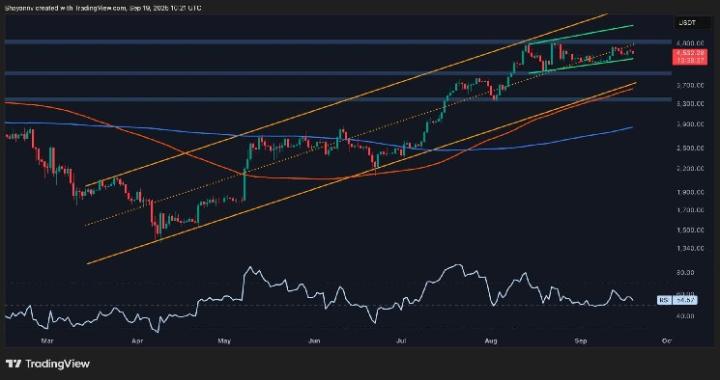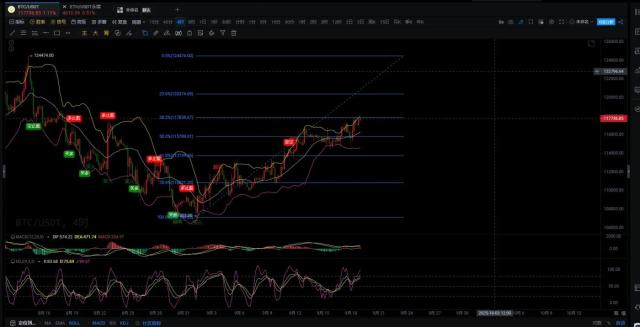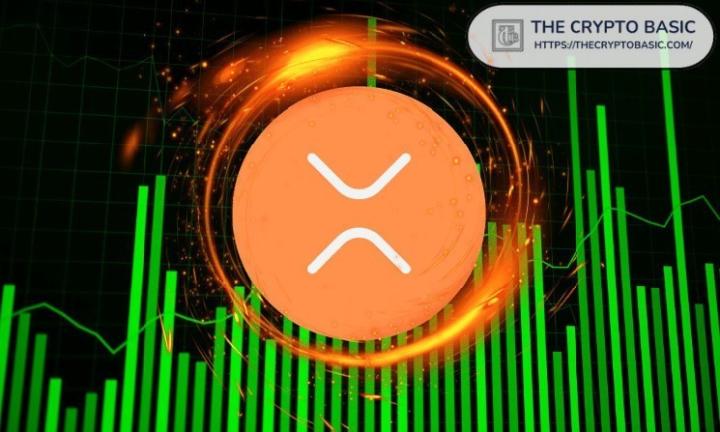We stand at a historic technological intersection. The deep integration of artificial intelligence ( AI ) and Web3 is reshaping the underlying logic and top-level architecture of the business world. AI represents a leap in productivity, reshaping efficiency and intelligence through data and algorithms; Web3 represents a transformation in production relations, leveraging blockchain technology to return ownership of data and value to individuals. The combination of the two not only propels the internet toward a new stage of "intelligence and value interconnection," but also spawns a trillion-dollar new market—particularly in the digital asset sector, exemplified by "real asset tokenization" (RWA), which is becoming a key hub for the convergence of traditional industries and the digital economy.

1. Integration of AI and WEB3: RWA Promotes Asset Flow
The pain points of traditional finance and the rise of RWAs. In traditional financial markets, a large number of high-quality assets, such as real estate, commodities, and art, suffer from widespread issues such as insufficient liquidity, high financing costs, and opaque valuation systems. While these assets have stable value, they are difficult to quickly divide, trade, and circulate, limiting their capitalization efficiency and market depth.
RWA (Real World Asset) tokenization uses blockchain technology to transform physical assets into programmable, divisible, and tradable digital certificates, enabling efficient on-chain transfer of ownership. This process not only improves asset liquidity but also enables automated dividends, collateralization, and transaction execution through smart contracts, injecting new vitality into traditional finance.
Dual empowerment of AI and WEB3. AI technology plays the role of "value discoverer" and "risk pricer" in the RWA ecosystem. Through machine learning, natural language processing, and multi-dimensional data analysis, AI can perform real-time valuation, risk monitoring, and market forecasting of physical assets, greatly improving the accuracy and dynamism of asset pricing.
WEB3, leveraging the immutable, transparent, and trustworthy nature of blockchain, provides RWA with the underlying infrastructure for clear ownership, traceable transactions, and automated contract execution. Smart contracts ensure transparent asset transfer rules, while the token economy model incentivizes multi-party participation, forming an open, collaborative, and efficient asset circulation network.
Typical application scenarios include the integration of DeFi and RWA. Currently, numerous projects are attempting to introduce RWA into decentralized finance (DeFi) platforms. For example, by tokenizing assets such as real estate and corporate bonds, users can engage in collateralized lending, liquidity mining, or fractional investment within DeFi protocols. AI models analyze market data, credit histories, and macroeconomic indicators to provide dynamic risk assessment and pricing support for these assets, further enhancing market confidence and efficiency.
2. Integration of AI and WEB3: RWA Promotes Data Value Creation
From "data monopoly" to "data ownership confirmation." In the traditional internet model, data is often monopolized by centralized platforms, making it difficult for users to realize the value of their data. WEB3, through distributed ledgers and token economic models, enables data ownership confirmation, pricing, and revenue distribution, transforming data from "raw material" into a truly tradable "asset."
AI relies on high-quality, large-scale data for model training and optimization. Under the WEB3 architecture, AI can access data with clear sources and ownership through decentralized data markets. Simultaneously, through technologies like privacy-preserving computing and federated learning, model training can be completed while protecting user privacy, achieving "data availability without visibility."
DAO-driven data communities. Decentralized Autonomous Organizations (DAOs) offer a new collaborative model for data sharing and AI training. Community members contribute data to model training and share the benefits and governance rights generated by model usage through tokens. This model not only breaks down data silos but also builds a fairer, more transparent, and more incentive-compatible data market.
3. AI and WEB3 Integration: RWA Promotes Application Assetization
The deep integration of AI and WEB3 enables real-world assets (RWA) to achieve unprecedented transparency and assetization within apps, fundamentally transforming the operational logic of traditional applications. Leveraging blockchain technology, RWA transforms physical assets like real estate and artwork into detachable and tradable digital certificates through transparent, intelligent apps, ensuring clear ownership and traceable transfers. AI, through dynamic data analysis and intelligent pricing, provides real-time risk assessment and value discovery for assets, enhancing market credibility.
Under this converged architecture, applications evolve from closed platforms to open, composable value networks. Users are no longer merely users; they now own assets and share in the profits through tokens. Smart contracts ensure the automatic execution of transaction rules and immutable data on-chain, creating a highly transparent collaborative environment. Furthermore, privacy-preserving computing and federated learning technologies enable "data availability without visibility," balancing transparency and privacy.
This transformation not only improves asset liquidity, but also reshapes the trust mechanism and business paradigm, bringing efficient, compliant and innovative solutions to multiple fields such as finance, supply chain, and cultural creativity.
IV. The “gray rhino” of regulation and compliance that cannot be ignored
Regulatory uncertainty: Global fragmentation and lag. Currently, global regulation of the converged applications of web3 and AI is still in its exploratory stages, with prominent issues such as vague legal definitions, unclear responsibilities, and cross-border jurisdictional conflicts. This is particularly true in the RWA sector, which involves multiple legal attributes such as securities, futures, and real estate, making it prone to falling into a compliance gray area.
Companies should adhere to the principle of "compliance first," actively communicate with regulators, participate in sandbox pilots, and leave room for policy adaptation. At the same time, they should closely monitor domestic and international regulatory developments, including EU AI legislation, the US SEC's recognition of token assets, and China's blockchain service registration and financial regulatory requirements, to avoid business interruptions caused by policy changes.
Technical risks: Data quality and smart contract vulnerabilities. While blockchain ensures data immutability, bias or errors in the raw data used to train AI can lead to systemic "garbage in, garbage out" risks, with the results permanently recorded. Furthermore, conflicts may arise between the AI's dynamic decisions and the static rules of smart contracts, leading to asset operation vulnerabilities or execution risks.
The ethical and privacy dilemma. There's a natural tension between blockchain's transparency and personal privacy protection. If AI models misuse public on-chain data for user profiling or surveillance, they could cross data protection red lines. Especially under strict regulations like the EU's GDPR and China's Personal Information Protection Law, companies must embed privacy protection mechanisms, such as zero-knowledge proofs and homomorphic encryption, from the early stages of design.
Challenges of principal responsibility and algorithmic accountability. In DAO-governed AI applications, decision-making power is decentralized within the community. Once algorithmic bias or operational errors occur, it is difficult to trace legal responsibility to specific individuals or organizations. Furthermore, the "black box" nature of AI makes its decision-making process difficult to explain, posing challenges to traditional legal mechanisms for determining fault.
5. Strategic Opportunities and Seizures for Business Leaders
In the wave of integration of AI and WEB3, business leaders should focus on three major strategic opportunities. AI assets based on the web3 architecture are bound to be the future development direction.
RWA. By putting traditional assets such as financial assets, real estate, and commodities on the blockchain and combining them with AI dynamic pricing and risk assessment, it can significantly improve asset liquidity, open up a trillion-level digital financial market, and provide new financing and risk control tools for traditional industries.
Data assetization and decentralized data markets. Web3 ensures data ownership and revenue distribution, while AI drives data value mining. The combination of the two can break down "data silos," build a compliant and efficient data factor market, and empower innovation in industries such as finance, healthcare, and marketing.
The next generation of decentralized applications (DApps). AI agents will become native Web3 users, supporting scenarios such as robo-advisory, AIGC creation, and supply chain optimization. Through the token economy, they will achieve automatic profit sharing and community governance, reshaping the user role from "user" to "owner."
It is recommended that enterprises prioritize cooperation rather than self-construction to quickly verify their business models and seize ecological niches.
Embrace change and reshape cognition. Business leaders should proactively learn the fundamental principles and technological trends of Web3 and AI, understanding their profound impact on corporate strategy, organizational structure, and business model. It is recommended to establish dedicated research teams to track technological evolution and market trends to avoid being left behind in disruptive change.
Embed ethics and compliance into the product's DNA. From the outset of a project, experts in technology, law, ethics, finance, and other fields should be brought in to jointly design the system architecture and business rules, ensuring compliance, security, and social responsibility throughout the product lifecycle.
Dynamically balance innovation and compliance. Successful companies of the future will not be the most radical technological risk-takers, nor the most conservative onlookers. Rather, they will be those organizations that can find a dynamic balance between technological innovation and regulatory constraints, exploring boundaries while also managing risks.
Collaboration is better than building your own, and verification is faster than investment. Unless companies possess the resources and capabilities of a tech giant, most should opt for partnerships with established, compliant WEB3 and AI technology companies. Leveraging their technology platforms and regulatory compliance experience, they can quickly verify their business models and reduce the cost of trial and error.
RWA, a prime example of the convergence of Web3 and AI, is just the beginning of this grand transformation. As technology matures, regulations become clearer, and the ecosystem becomes increasingly diverse, we will usher in a new era of the value internet, driven by data, executed by smart contracts, and governed by communities. Only those companies with a forward-looking vision, a fear of risk, and the courage to reimagine will seize the opportunities of this paradigm shift and become future business leaders.







